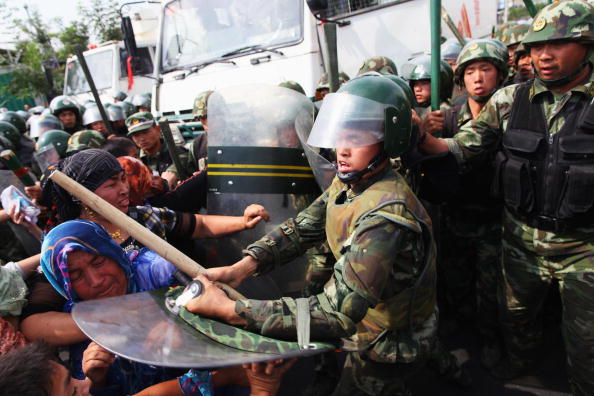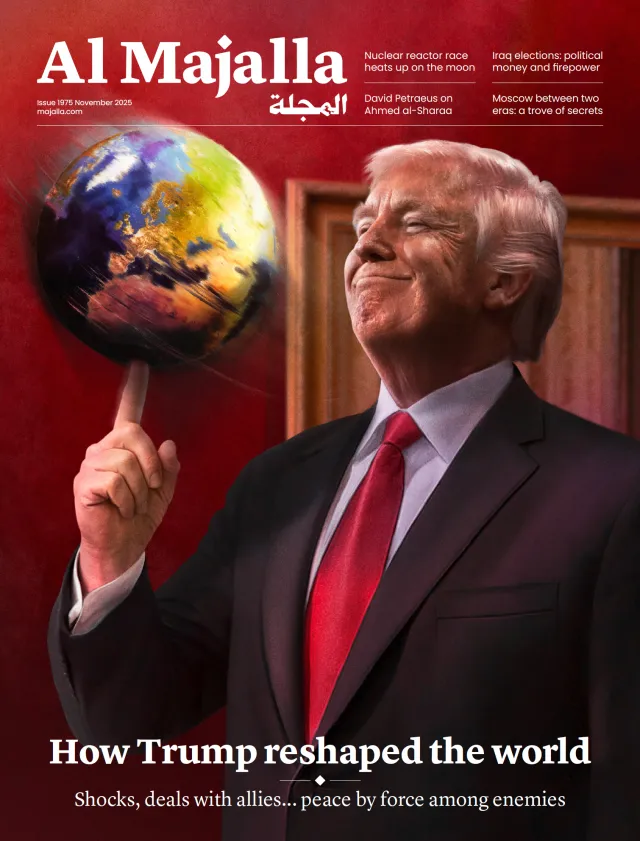China is facing global political criticism over its alleged persecution of the Uighurs. Human rights organizations, UN officials, and many foreign governments are urging China to stop the crackdown. China initially denied the existence of the camps, before claiming they were a necessary measure against separatist violence in Xinjiang. Chinese officials maintain that what they call vocational training centers do not infringe on Uighurs’ human rights. They have refused to share information about the detention centers, and prevented journalists and foreign investigators from examining them.
WHO ARE THE UIGHURS AND WHY ARE THEY TARGETED?
The Uighurs are a mostly Muslim Turkic ethnicity who regard themselves as culturally and ethnically close to Central Asian nations. The majority live in Xinjiang, where they number about 11 million people. The area has been under Chinese control since 1949, when the communist People’s Republic of China was established. Uighur communities are also found in Uzbekistan, Kyrgyzstan, and Kazakhstan, and several thousand live in Australia.
Uighurs speak their own language — an Asian Turkic language similar to Uzbek — and most practice a moderate form of Sunni Islam. Some activists, including those who seek independence from China, refer to the region as East Turkestan.
Once situated along the ancient Silk Road trading route, Xinjiang is oil- and resource-rich. As it developed along with the rest of China, the region attracted large numbers of Han Chinese, a migration encouraged by the Chinese government. Mass immigration of Han Chinese has made Uighurs a minority now in the province and many Uighurs complain that Han Chinese are taking their jobs, and that their farmland has been confiscated for redevelopment.
Activists say that over the years, central government policies have gradually curtailed the Uighurs' religious, commercial and cultural activities. Beijing is accused of intensifying its crackdown after street demonstrations in Xinjiang in the 1990s, and again in the run-up to the Beijing Olympics in 2008 where 200 people were killed and hundreds injured while protesting for economic rights. The Chinese government, however, blamed the protests on violent separatist groups — a tactic it would continue to use against the Uighurs and other religious and ethnic minorities across China.
CCP policy in Xinjiang escalated sharply in spring 2017 motivated by China’s external insecurities — most notably, the belief that the CCP had to act to prevent terrorist networks from diffusing into Xinjiang from abroad. That year, China’s President Xi Jinping issued a directive that "religions in China must be Chinese in orientation" and "adapt themselves to socialist society". The directive led to a fresh crackdown on religious freedom and increased surveillance on the minority population under the guise of combating terrorism and extremism. Western experts are skeptical, and even the most generous estimates of Uighur militant capability do not imply that insurgency inside Xinjiang is present, or even imminent. But as a result, the CCP is imprisoning and involuntarily reeducating huge numbers of people who have shown no inclination toward anything other than normal Uighur cultural or Muslim religious practice on the basis of inaccurate threat perceptions.
But there's another reason why Beijing wants to clamp down on Uighurs in Xinjiang: The region is home to some of the most important elements of the Belt and Road Initiative (BRI), China's flagship trade project. The BRI, which went into effect in 2013, aims to link Beijing with some 70 countries around the world via railroads, gas pipelines, shipping lanes, and other infrastructure projects. It is considered President Xi Jinping's pet project, and an important part of his political legacy. China is estimated to have invested between $1 trillion and $8 trillion into the project. Experts point out that China's growing emphasis on BRI projects coincides with Beijing's crackdown in Xinjiang. Adrian Zenz, a leading scholar on China’s policies toward the Uighurs based in Germany, told The New York Times : "The role of Xinjiang has changed greatly with the BRI," and that China's ambitions have turned Xinjiang into a "core region" of economic development.

“A MASSIVE INTERNMENT CAMP”
Reuters journalists, observing satellite imagery, found that thirty-nine of the camps almost tripled in size between April 2017 and August 2018; they cover a total area roughly the size of 140 soccer fields. Similarly, analysing local and national budgets over the past few years, Zenz found that construction spending on security-related facilities in Xinjiang increased by 20 billion yuan (around $2.96 billion) in 2017. He also believes that Chinese officials began using dedicated camps in Xinjiang as far back as 2014.
There are an estimated one million (if not more) Uighur Muslims detained in these so-called “re-education camps” where they bombarded with the traditions of the country’s majority Han Chinese and made to learn Mandarin Chinese. They are also forced to criticise or renounce their faith with the goal of stripping them of their religious and ethnic identity and replace it with absolute loyalty President Xi Jinping and the state.
Some of the targeted “de-extremification” restrictions gained coverage in the West, including a ban on certain Muslim names for babies and another on long beards and veils. The government also made it illegal to not watch state television and to not send children to government schools. The government reportedly tried to promote drinking and smoking, because people who didn’t drink or smoke — like devout Muslims — were deemed suspicious.
In addition to the bizarre exercises aimed at “brainwashing” them, a report published by AFP exposed the physical torture and deprivation taking place in the camps. AFP described camps where thousands of guards carrying spiked clubs, tear gas, and stun guns surveil the detainees, who are held in buildings surrounded by razor wire and infrared cameras. AFP journalists also reviewed public documents that showed government agencies overseeing the camps purchased 2,768 police batons, 550 electric cattle prods, 1,367 pairs of handcuffs, and 2,792 cans of pepper spray. Some released detainees contemplated suicide or witnessed others kill themselves.
Women have shared stories of sexual abuse inside the camps, with some saying they were forced to undergo abortions, sterilisation or have contraceptive devices implanted against their will. A report by the Associated Press found that having too many children is a major reason people are sent to detention camps, the AP found, with the parents of three or more ripped away from their families unless they can pay huge fines. Police raid homes, terrifying parents as they search for hidden children. The campaign over the past four years in the far west region of Xinjiang is leading to what some experts are calling a form of “demographic genocide.”
Children whose parents have been sent to the camps are often forced to stay in state-run orphanages. Uighur parents living outside of China often face a difficult choice: return home to be with their children and risk detention, or stay abroad, separated from their children and unable to contact them.
In August 2018, a UN human rights committee was told there were credible reports that China had "turned the Uighur autonomous region into something that resembles a massive internment camp". The reports are backed by rights groups, with Human Rights Watch saying people with relatives in 26 so-called "sensitive" countries like Indonesia, Kazakhstan and Turkey have been rounded up. Anyone who has contacted someone abroad via WhatsApp is also targeted, according to HRW. HRW says Uighur people in particular are subject to intense surveillance - from facial recognition cameras to QR codes on people's doors, so officials can check the codes to see who is inside at any point. People are also reportedly made to undergo biometric tests.
Detainees are selected and monitored because they were Muslims and behaved in ways that China’s leaders thought objectionable. For example: They wanted to go on a religious pilgrimage. They frequently worshiped at a mosque. They had friends whom the authorities had designated as suspicious. They maintained what the government considered a “heavy religious environment” at home, or they wore a beard, or attended a funeral, or obtained a passport, or had more than one child.
Details of how people were taken to the camps are found in a 137-page document was obtained by the New York Times, Wall Street Journal and Financial Times which outlined information that authorities in Karakax County in southwestern Xinjiang collected on residents between 2017 and March 2019. The sheet includes names and government identification numbers of 311 people held in the camps, as well as hundreds of their neighbors and relatives. The authorities checked three generations of each detainee’s family and monitored people as young as 16 years old for behavior that would indicate adherence to ethnic Uighur culture and traditions. As the Economist reported, “authorities divide each city into squares, with about 500 people. Every square has a police station that keeps tabs on the inhabitants. So, in rural areas, does every village,” as part of their “grid management” policing system.
THE WORLD REACTS, AT LAST
As more and more reports emerge of Beijing’s atrocities toward Uighurs, officials and lawmakers in the West have begun to loudly condemn China and call for a forceful policy response.
The US government recently announced Magnitsky style sanctions against Chinese officials over the allegations which passed overwhelming support from Congress. In October 2019, the US imposed visa restrictions on Chinese officials “believed to be responsible for, or complicit in” the detention of Muslims in Xinjiang. It had also blacklisted companies and institutions it believes are involved in human rights violations in the region. his month, the UK foreign secretary Dominic Raab accused China of “gross and egregious” human rights abuses. France’s foreign minister recently condemned the treatment of Uighur Muslims in China and said Paris wanted independent observers to be allowed into Xinjiang. The European Union has called on China to respect religious freedom and change its policies in Xinjiang. And human rights organizations have urged China to immediately shut down the camps and answer questions about disappeared Uighurs.
Human Rights Watch has advocated other actions that countries could take: publicly challenging Xi; denying exports of technologies that facilitate abuse; pressing China to allow UN investigators in Xinjiang; and preventing China from targeting members of the Uighur diaspora.








